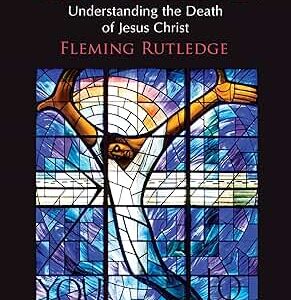The Joy Of It
I know these are dark days. I am especially feeling the rupture, an entirely unnecessary one, of the U.S. relationship with Canada. I have done a lot of work with churches and seminaries in Canada. I have dear friends and colleagues there. Currently, I am working with the United Church of Canada on a project called, “Re-Imagining Theological Education.”
I am quite sad about this foolish assault on a friend and the heedless breaking of an important relationship. I feel as if I need to start every meeting with my Canadian colleagues with an apology! I applaud the defiant words and spirit of Canada’s new Prime Minister, Mark Carney, who has said, “In trade, as in hockey, Canada will win.”
 In such times it is important to remember stories of hope and joy. I want to share one from our newest webinar which began last evening.
In such times it is important to remember stories of hope and joy. I want to share one from our newest webinar which began last evening.
But first, some context. This webinar, done in cooperation with our friends at “Crackers and Grape Juice,” is based on Fleming Rutledge’s extraordinary book, The Crucifixion: Understanding the Death of Jesus Christ. You can find information on the right side of this page about that webinar and how you can participate on subsequent Mondays, 4:00 pm. PDT, 7:00 pm EDT.
The most common American understanding of the crucifixion — Jesus died for my personal sins to placate an angry God — is at best problematic, at worst unbiblical and heretical.
In contrast to that simplistic and misleading, but pervasive, take on the crucifixion, Fleming considers ten biblical motifs that enlarge and enrich our understanding. For sure, there is a place for atonement theology — the cross as atoning for human sin and dealing with guilt — but not one that pits an angry God against an innocent Son, so dividing the Trinity against itself.
Last night we discussed the first two motifs that Fleming explores to enrich our understanding of the cross, “The Passover and the Exodus.” These are the core, the primal narrative, of the Old Testament. Both are drawn on in the New Testament depictions of the crucifixion and resurrection. It was not an accident that Jesus was celebrating the Passover meal with his disciples when he took the bread and said, “This is my body, broken for you.”
Placing the crucifixion in the context of Passover and Exodus emphasize the crucifixion and resurrection as God’s work of deliverance from the twin powers of Sin and Death. For a hymn that does the same read the lyrics of the great Easter hymn, “Come, Ye Faithful (Raise the Strain of Triumphant Gladness).”
Toward the end of the chapter on the Passover and Exodus motifs, Fleming writes of the ways the 20th century civil rights movement drew upon those stories of deliverance. Here’s an excerpt from The Crucifixion in which she cites a story from Andrew Young’s book about the civil rights movement. Not only does this story illustrate the power of the Passover/ Exodus for Christians, but it is a story of surpassing joy. And, as such one to remember in our current dark days. Here Andrew Young recalls “the parting of the waters” in Birmingham, Alabama, in 1964.
“Easter Sunday dawned with Martin (Luther King Jr.) in jail . . . we planned a march from New Pilgrim Baptist Church to the city jail for the afternoon of Easter Sunday . . . By the time church ended some five thousand people had gathered . . . dressed in their best Sunday clothes.
“The marchers set out in a festive mood. Suddenly they saw police, fire engines, and firemen with hoses in front of them, blocking their path. ‘Bull’ Connor bellowed, ‘Turn this group around!’ Five thousand people stopped and waited for instruction from their leaders.
“Wyatt Walker and I (Young) were leading the march. I can’t say I knew what to do. I know I didn’t want to turn the march around . . . I asked the people to get down on their knees and offer a prayer . . . Suddenly Rev. Charles Billups, one of the most faithful and fearless leaders of the old Alabama Christian Movement for Human Rights, jumped up and hollered, ‘The Lord is with this movement! Off your knees! We’re going on!’ . . . Stunned at first, Bull Connor yelled, ‘Stop ’em, stop ’em!’ But none of the police moved a muscle . . . Even the police dogs that had been growling and straining at their leashes were now perfectly calm . . . I saw one fireman, tears in his eyes, just let the hose drop at his feet. Our people marched right between the red fire trucks, singing, ‘I want Jesus to walk with me.’
” . . . (Bull Connor’s) policemen had refused to arrest us, his fireman had refused to hose us, and his dogs had refused to bite us. It was quite a moment to witness. I’ll never forget one old woman who became ecstatic when she marched through the barricades. As she passed through, she shouted, ‘Great God Almighty done parted the Red Sea one mo’ time!'”
Such a powerful story of God’s deliverance from the powers of Sin and Death. It brings tears to my eyes. It also may help us to see the crucifixion and resurrection is a new light as well as providing needed light in the midst of these dark times.
![Anthony B. Robinson [logo]](https://www.anthonybrobinson.com/wp-content/themes/anthonybrobinson/images/logo.png)
![Anthony B. Robinson [logo]](https://www.anthonybrobinson.com/wp-content/themes/anthonybrobinson/images/logo-print.png)